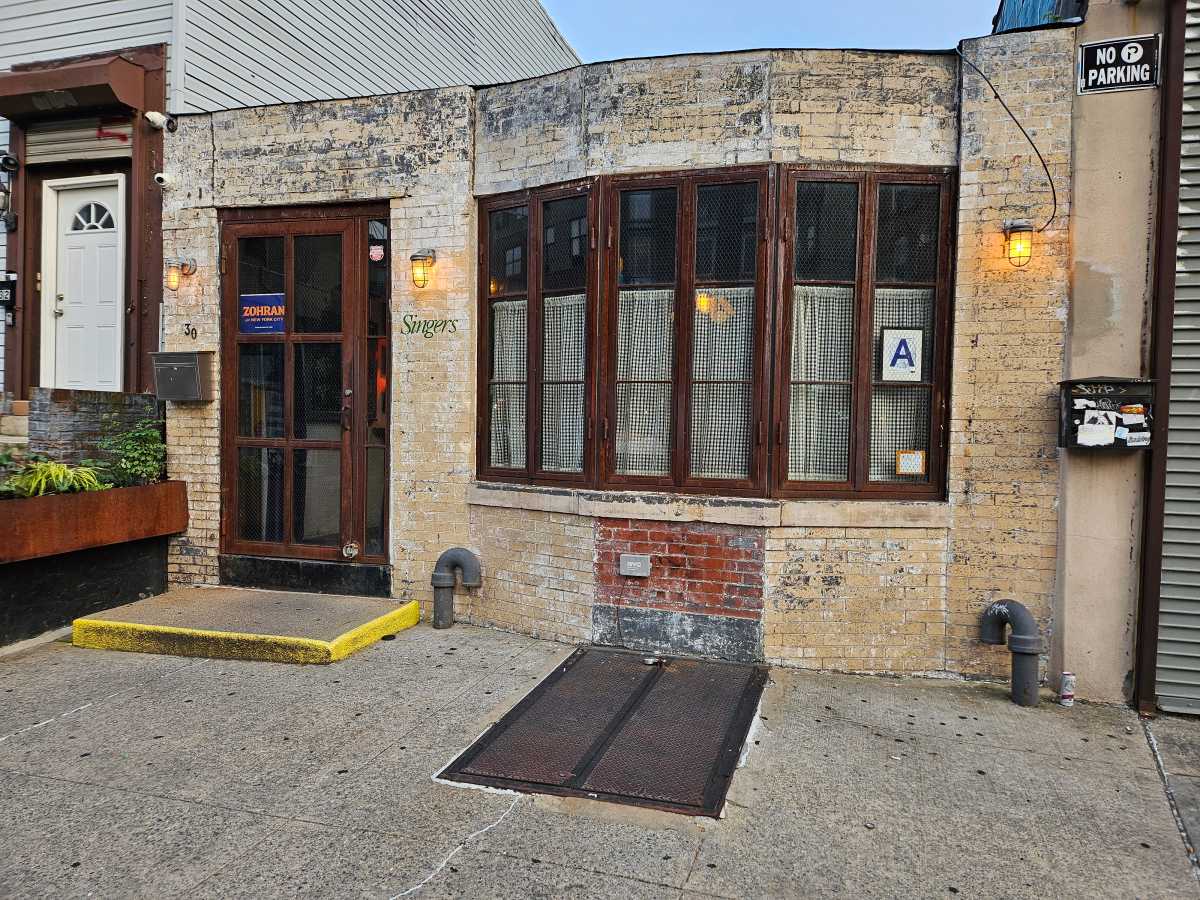By Bonnie Rosenstock
A stroll down the stretch of Eighth St. known as St. Mark’s Pl. in the East Village is an exercise in controlled and not-so-controlled excess, chaos and contradiction. The legendary street runs from Third Ave. to Avenue A, where it abruptly ends at the western perimeter of Tompkins Sq. Park. Its inelegant epicenter, between Second and Third Aves., includes an abundance of locales that entertain, educate, clothe and feed the hungry of all appetites.
Out-of-towners can lodge at the St. Marks Hotel at the southeast corner of Third Ave. Tourists and locals alike can enjoy a pint at the next-door St. Marks Ale House, or eat at the inimitable Dojo at 30 St. Marks Pl., go grocery shopping at the St. Mark’s Market or order takeout at the St. Mark’s Deli, purchase vintage, “gently used” or new rags at Andy’s St. Marks and browse or buy reading material at St. Mark’s Comics and St. Mark’s Bookshop.
If you have noticed an inconsistency in the above spellings of Marks/Mark’s, no, it’s not because an editor fell asleep on the job. This is how these establishments write their address or spell their name. Houston — as in Texas icon Sam, not as in the street in the Village (named after William Houstoun, a Georgia delegate to the Continental Congress) — we have a problem.
Joining the ranks of the apostrophe conflicted is the Pearl Theater Company, between First and Second Aves., housed at — big overhead sign — Theater 80 St. Marks. In contrast, the delivery notice taped to the door of the theater gives the address as 80 St. Mark’s (with apostrophe). As it turns out, the delivery sign is the last vestige of the Old Order. Matthew Coleman, associate marketing director, explained that for the 10 years since the repertory company has resided here, they had always used an apostrophe on all their letterhead and material. Then just three months ago, Matt Schicker, the new marketing director, decided it was incorrect. “It destroyed my world, knowing that I’ve been wrong for the five years I’ve been here,” Coleman said. “We’re in the process of great reform. I still have to stop, proofread and change everything to without an apostrophe. It was a passionate debate for a while.”
At St. Mark’s Comics, owner Mitch Cutler, has no such uncertainty. When he bought the place 21 years ago, he inherited the apostrophe from the previous owner and just kept it. “We seem to be on the right side of this conversation [grammatically],” he said.
In agreement is Terry McCoy, one of the erudite founding owners of St. Mark’s Bookshop. From 1977 until 1987, the bookstore was located at 13 Saint Mark’s Pl.; from 1987 to 1993, they were across the street at 12 Saint Mark’s Pl. McCoy says that they spelled out “Saint” in order to avoid the possible confusion of “13th Street Mark’s Pl.” Now that they are at 31 Third Ave. and Stuyvesant St., their name in iridescent green lettering is punctuated with a no-nonsense blue period at the end of “St.” and a blue apostrophe in “Mark’s.” “We don’t know the reasons that street-naming people have. We’re not trying to deny the possessive because it’s correct grammar,” he said.
Apostrophe: The St. Mark’s Bookshop, left, and historic St. Mark’s Church, the latter after which the street is named.
What’s going on here? First and foremost, the green street signs read “St Marks Pl” (without period or apostrophe), although the street is named for St. Mark’s Church in-the-Bowery (with period, apostrophe and two hyphens), which is neither on the present-day Bowery nor St. Mark’s Pl.. (It’s two blocks north, on Second Ave. and 10th St.) The strict and unwavering rule of English grammar calls for a possessive, i.e., an apostrophe. Like the signage, The New York Times also chooses to ignore the apostrophe, which the Times’s Metro newsroom confirmed.
Eric Robinson, a librarian at the New-York (with hyphen) Historical Society, takes umbrage with the Times. According to “The Iconography of Manhattan Island” (known to scholars simply as “Stokes”), by Isaac Newton Phelps Stokes, six volumes, published in 1913, which Robinson asserts is still “a widely respected text,” St. Mark’s Pl. is definitely endowed with an apostrophe.
The perplexed folks at the Pearl Theater, desperate to resolve the issue, tried to reach the Department of Transportation, the agency responsible for putting up the punctuation-challenged street signs, but “we got nowhere with 311,” says Coleman.
In a phone interview with Gerard Soffian, D.O.T.’s director of Signs and Marketing, the matter was finally clarified. Soffian stated that the agency tries to be faithful to the correct spelling of names as documented in the official city map, which is maintained by the borough president’s office (specifically by the borough historian) — with the exception of abbreviations and punctuation marks. “The purpose is to convey information clearly, quickly and as concisely as possible,” he said. “We do what is essential for that. The white letters on green background are consistent with federal D.O.T. standards for size, color and font. We don’t believe that punctuation marks are essential parts of the sign. Our philosophy is to have them quickly understandable. Sometimes the niceties of grammar are lost. I don’t think an English teacher would like it,” he acknowledged.
He also pointed out that the “DONT [sic] WALK” crossing-light sign, since replaced by a figure and a hand, didn’t contain an apostrophe either. “I hope it didn’t cause school children to leave out the apostrophe,” he added.
Of course, this doesn’t quite explain the hearty writing on the handsome blue signs in parts of Midtown west that say, for example, “West 35th St” or “Eighth Ave” (with only a loss of a period). In contrast, “E 6 St” or “3 Av” on the green has been reduced to an instant text message. Soffian’s advice: use proper punctuation when writing our own addresses. And that includes St. Mark’s Pl.
thevillager.com




































